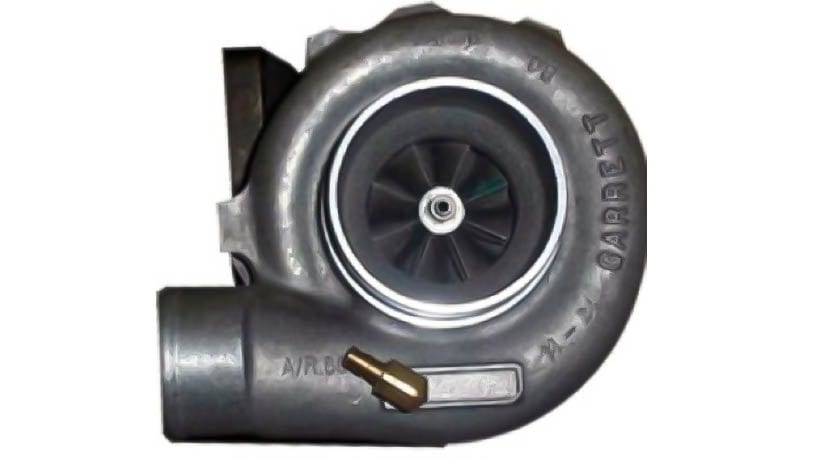
The turbocharged engines They have become very common nowadays. Thanks to them, our cars are more efficient and have more power. But not all are and advantages. There is also a series of drawbacks that can make us consider if we want an engine with these characteristics. Below we list its pros and cons so that you have it clear.
First a brief overview of mechanism. The turbocharger uses the exhaust gases to increase the amount of air that goes into the engine. To fulfill this function, it has two main elements. The first of them is the turbine and the second the compressor. The exhaust gases pass through the turbine turning the turbo, which will push the air through the compressor so that it gains pressure. Once in this state of high pressure (and therefore more speed), the air is sent to the intake manifold.
Advantages
engine performance
One of the great advantages of turbocharged engines is the performance. Engines with this device can get more power with less displacement. Something especially noticeable in sports vehicles. However, it is not necessarily about maximum power, it is also looking for increase torque.

Turbocharged engines have the delivery of its maximum torque much sooner than atmospheric ones. For those unfamiliar with the term torque, this means they start pushing hard earlier. For example, a naturally aspirated engine like the one in an Opel Astra 1.4 with 100 hp from 2010 delivers maximum torque to the 4.000 rpm. On the other hand, its replacement that arrived in 2106, the Opel Astra 1.0 Turbo with 105 CV, reaches its maximum torque at much earlier times. 1.800 rpm. The result is a more comfortable drive, in which you don't have to resort to changing gears as much, because the car responds strongly much earlier on the rev counter.
Fuel savings
Turbocharged engines greatly facilitate Energy Recovery, because they take advantage of the speed of the exhaust gases. They have to revolutionize less to get the same performance. That is why they consume less by having to turn the engine less times, with the consequent reduction of internal friction. In addition, with the inclusion of the turbo in recent years, there is a tendency towards engine downsizing (downsizing). This causes an even greater decrease in friction and a decrease in the weight of the engine.
High altitude operation
turbocharged engines function properly at any altitude, whatever its level with respect to sea level. The atmospheric ones lose power because the air that enters the engine has less oxygen and they do not have any way of forcing their entry into the engine. Those with a turbo detect that there is less oxygen and the control unit gives the order to the turbo to blow with more pressure. So it compensates for the power loss.

Disadvantages
relative brittleness
the turbo does not have a specific maintenance. It uses the same oil as the engine and does not require extra work in the workshop to keep it in optimal condition. What it does require is a extra care by the driver. We recommend that you take a look at the article Let's take care of the turbo of our car, to find out what are the good habits so that it lasts as long as the car itself.
late
One of the most heard disadvantages of turbos is that your response is not immediate. It takes a few moments to compress the air entering the engine intake and therefore there is a lag from the moment the accelerator is pressed until all the power that we are asking for enters.
There are several ideas to eliminate or minimize turbo lag. For example, him engine with one turbo for each cylinder which was patented in 2017. By having each turbo placed very close to the cylinders, the pressurized air reaches its destination very quickly. Another solution is the one applied by Mercedes, which places the turbochargers inside the "V" of the engine, to minimize the distance that the exhaust gases travel to the turbo.
There is also another system used by some Ford engines such as 2.3 EcoBoost recently acquired by Focus ST, who maintains fuel injection in the engine when the driver takes his foot off the accelerator. In this way it conserves the revolutions of the turbo and therefore the air pressure. Of course, this operating mode is only used when the sportier driving modes are activated, otherwise fuel consumption would skyrocket.
I wanted to ask what disadvantage does it bring when a turbo is bad in a nissan engine, because I have a problem when I start in first gear on a climb, the accelerator no longer accelerates me and the engine runs out, they tell me that it could be the turbo that is bad or the injectors
Hello, I would like to know what are the advantages of a Mercedes 1528 motorhome with turbo, high differential and 1100 wheels, thanks
Hello, I would like to know if a 98.48 mm piston perkins engine that is not designed for turbo could be installed and if this would bring an improvement to the engine. or some inefficiency since it does not come prepared for this. or any engine can be put..
Thank you